|
|
Post by anastasiaescrava on Apr 18, 2014 21:50:47 GMT -5
Bump
|
|
|
|
Post by anansi on Apr 22, 2014 2:16:06 GMT -5
 An Ashanti commander. of the 1800 An Ashanti commander. of the 1800  "Adoo Quamina "; showing him mounted on a horse. This hand-colored illustration is in the French translation of Hutton's "A Voyage to Africa, including a narrative of an embassy to one of the interior Kingdoms in the year 1820" (London, 1821). Hutton was the British government's consul to Ashanti." "Adoo Quamina "; showing him mounted on a horse. This hand-colored illustration is in the French translation of Hutton's "A Voyage to Africa, including a narrative of an embassy to one of the interior Kingdoms in the year 1820" (London, 1821). Hutton was the British government's consul to Ashanti." |
|
|
|
Post by zarahan on Apr 23, 2014 1:45:31 GMT -5
 That's one badddddd... cavalryman.. |
|
|
|
Post by anastasiaescrava on Apr 23, 2014 22:36:11 GMT -5
 An Ashanti commander. of the 1800 An Ashanti commander. of the 1800  "Adoo Quamina "; showing him mounted on a horse. This hand-colored illustration is in the French translation of Hutton's "A Voyage to Africa, including a narrative of an embassy to one of the interior Kingdoms in the year 1820" (London, 1821). Hutton was the British government's consul to Ashanti." "Adoo Quamina "; showing him mounted on a horse. This hand-colored illustration is in the French translation of Hutton's "A Voyage to Africa, including a narrative of an embassy to one of the interior Kingdoms in the year 1820" (London, 1821). Hutton was the British government's consul to Ashanti."Links? |
|
|
|
Post by anansi on Apr 24, 2014 3:14:47 GMT -5
|
|
|
|
Post by anastasiaescrava on Apr 24, 2014 9:17:17 GMT -5
Thanks! I really love stuff like this |
|
|
|
Post by zarahan on Apr 24, 2014 23:00:46 GMT -5
Adding to the kitty: African army attacks against slavers or foreign intruders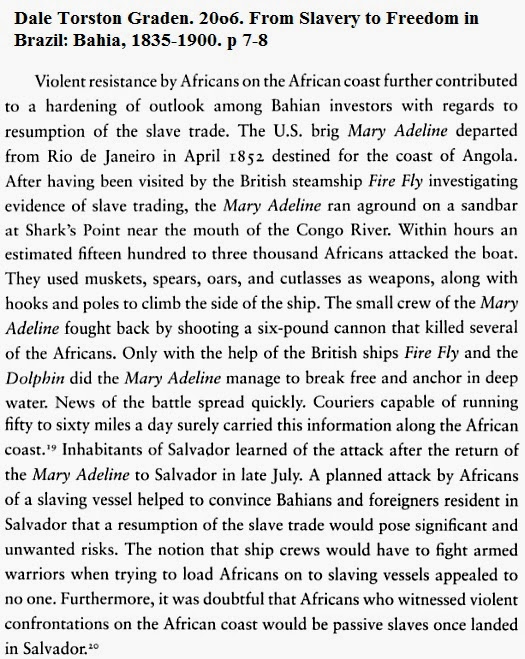 ^^Of note is the substantial force mustered to take on the trapped vessel. Also note the wide-ranging mobilization across the region, with couriers carrying news. Recon parties must have kept tabs on the European intruders across a wide zone, then relayed the info for a final mobilization order by the appropriate war chiefs/leaders/councils, who put some 1500-3000 warriors on the floor for battle. I find the African response
and organization here impressive. This was no mere local village turning out a light posse to rescue some local victims. One thing missing here from the African arsenal is the archery of poisoned arrows. These were effective in 15th century battles that repulsed European slave traders. ------------------------------------------------- In the 15th century for example the Portuguese engaged in a series of ruthless raids against the Senegal coast, hunting for slaves. While powerful on the open sea, the Portuguese ships were less impressive in the shallow waters near to shore. Using war canoes the African tribes of the coast fought back with lance, club, sword, and especially poisoned arrows. Poisoned missile fire from fast moving canoes neutralized Portuguese armor and decimated the European naval crews. The Portuguese were eventually forced to abandon raiding and set up peaceful trading arrangements with local African rulers using diplomacy. books.google.com/books?id=S42CypbRTlQC&pg=PA9------------------------------------ One question: Muskets may have helped in this era but did the African weapons kit in this instance lack enough firepower by not using indigenous firepower- i,e. the poisoned arrow archery barrage that had proven effective before? Anyone have more info On poisoned arrow archery in African militaries? Anastasia? Time to contribute some actual data, no? rather than simply agree with every post. Not pushing, just sayin..  Some SPECIFIC contributions would be nice.. |
|
|
|
Post by anansi on Apr 25, 2014 1:00:28 GMT -5
Zarahan
Well It maybe that in this general area the local military did
not employed the use of poisoned tips seen in use on the Senegalese coast
However many of the large kingdoms and empires were active participants in
the trade,if there was a budding abolitionist movement by smaller kingdoms
they would have to take on powerful African adversaries one of the better known
cases would be Nzinga
Notice she used military as well as diplomatic maneuvers to get her way often skillfully playing one European power against the other she used the Dutch then then turned on them,but as you can see a smaller state going up against one of the African giants would have been a tough call especially for a leader of lesser abilities.
Btw on a side note when those African states involved in the trade were displeased for any reason they simply turn of the tap and the trade came to an immediate halt as happened sometimes,for they until the repeating rifles could not simply bullied their way into the interior snatching Africans as they pleased they had huge well organized armies to oppose them.
|
|
|
|
Post by anastasiaescrava on Apr 25, 2014 9:03:37 GMT -5
Here's a website on Poison use in South Africa but not for military use. poison
Meh, I don't think you will find much... This is not my strong point. Pictures and folklore are more my thing. You would need a book for more info but you know how that is when it comes to African history.... |
|
|
|
Post by zarahan on Jun 25, 2014 18:41:35 GMT -5
Credits: Originally posted by mena7 at ES: 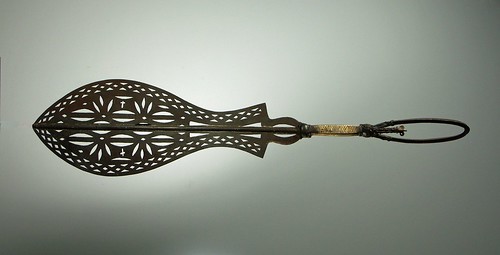 Kingdom of Benin sword  Kingdom of Benin Opia sword  Benin Ada sword  Benin short sword 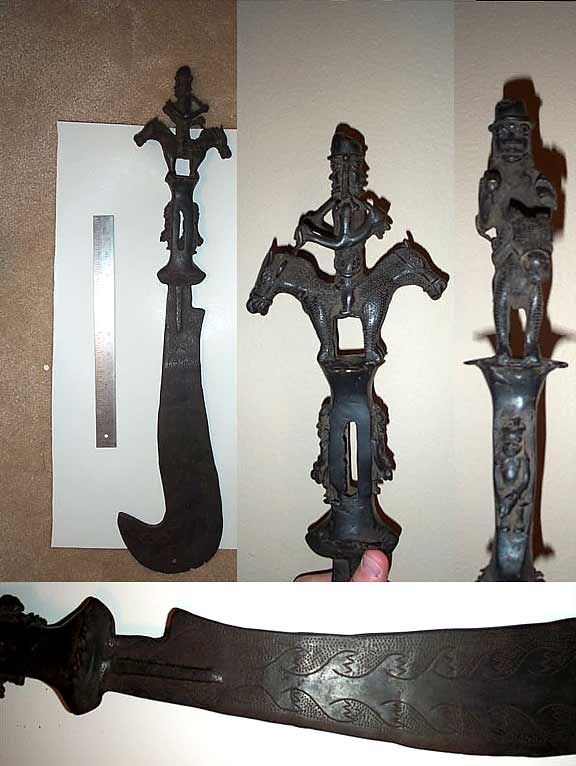 Benin sword 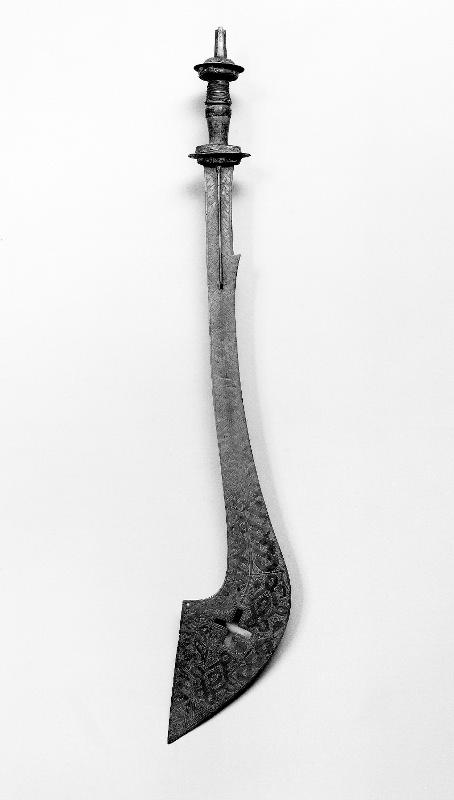 Benin sword  Akan Akrafena sword  Akan Akrafena sword 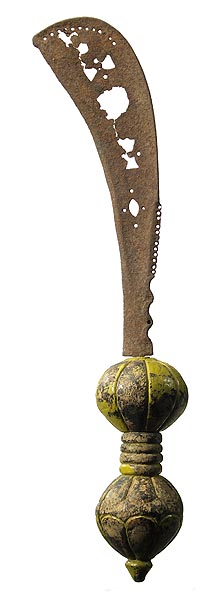 Akan Akrafena sword 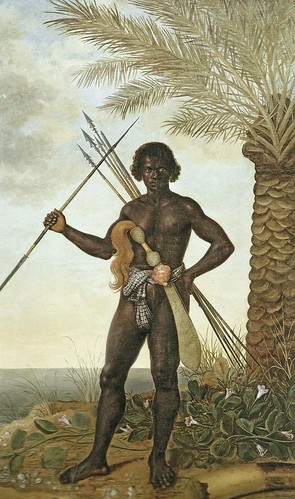 Black African or American with Akrafena sword 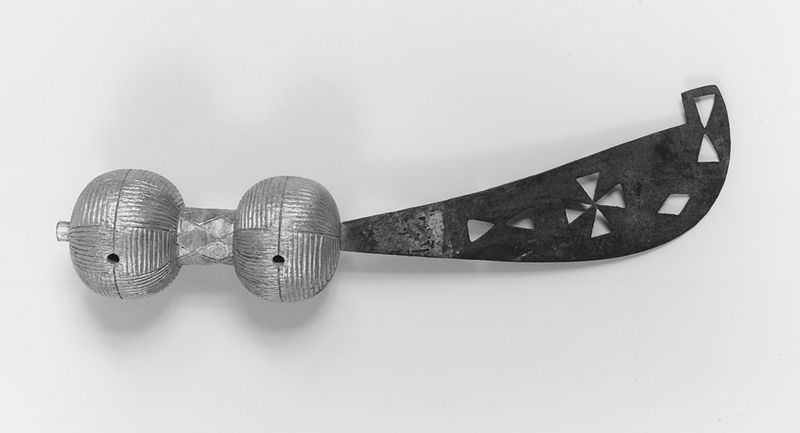 Akrafena sword Akrafena (Akan sword) is an Akan sword, that was originally meant for warfare, but has also assumed other certain functions. They carry adinkra symbols that evoke specific messages. The sword has three parts: a blade, usually made of some metal such as iron; the hilt, made of carved wood or metal; and the sheath, usually made of animal hide. The blade in ritual swords may not have a sharp cutting edge. It often has incised lines or Akan symbolic designs on it. Some swords have double (afenata) or triple (mfenasa) blades. The hilt may be wrapped with gold leaf with various Akan symbols worked onto it. The hilt itself may be carved to encode an Akan symbol. The sheath may carry an embossment (abosodee) that comprises Akan symbols meant to evoke certain expressive messages. The mpomponsuo (responsibility) sword of the Asantehene, for example, has an embossment of a coiled snake with a bird in its mouth. This conveys the Akan message: nanka bobonya mede asase anya onwam – the puff adder that cannot fly has caught the hornbill that flies. This is used to symbolize patience, prudence, and circumspection |
|
|
|
Post by zarahan on May 3, 2016 20:03:18 GMT -5
There is also the whole naval area a well. The Moors of course ranged widely from the African Mediterranean coast, but inland states also rose to prominence where stretches of navigable river permitted.  |
|
|
|
Post by Tukuler al~Takruri on May 4, 2016 10:07:06 GMT -5
Useful data mining from a hostile witness   |
|
|
|
Post by zarahan on May 10, 2016 20:39:58 GMT -5
Great harvest Takuri!
|
|
|
|
Post by anansi on Sept 5, 2020 4:38:26 GMT -5
Bump for Shadow.
|
|